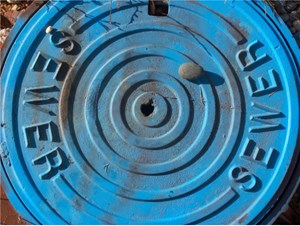Rural Alabama communities to upgrade wastewater infrastructure with federal funding
(UI) – The U.S. Environmental Protection Agency (EPA) announced the expansion of its successful Closing America’s Wastewater Access Gap Community Initiative to 150 additional communities. Originally launched in partnership with the U.S. Department of Agriculture (USDA), the pilot initiative has been assisting 11 communities since 2022. This program, along with funding through the Bipartisan Infrastructure Law, will help thousands of Americans access the wastewater infrastructure they need to thrive to include two Alabama communities - Greene County and Lowndes County.

“Many rural and low-income communities in the U.S. lack basic running water and indoor plumbing, and our Closing America’s Wastewater Access Gap Program has been instrumental in helping communities from White Hall, Alabama to McDowell County, West Virginia to the San Carlos Apache Tribe in Arizona access Bipartisan Infrastructure Law funding to address this critical need,” said EPA Assistant Administrator for Water Radhika Fox. “In expanding the program to 150 additional communities, we are working to restore dignity and opportunity to underserved communities nationwide.”
“Access to adequate wastewater infrastructure is a basic human right. Unfortunately, too many Alabamians in the Black Belt have suffered from generations of disinvestment in basic water infrastructure,” said Rep. Terri A. Sewell (AL-07).
Closing America’s wastewater access gap community initiative
An estimated 2 million people in the U.S. live without adequate wastewater infrastructure and safe and reliable drinking water in their homes. Many more live with wastewater infrastructure that is ineffective and puts people’s health at risk.
To date, the initiative has helped provide communities with no cost technical assistance that helps identify affordable options accessing wastewater infrastructure. For example, technical assistance providers help the community conduct assessments of the community’s specific needs and submit applications for wastewater funding.
So far progress for the 11 pilot communities includes seven funding awards and 10 additional funding applications submissions. All 11 communities have drafted community solution plans, which are in the process of being finalized, and will be posted to EPA’s Closing America's Wastewater Access Gap webpage in the early spring.
In Lowndes County, Alabama, children and families are exposed to raw sewage at the place that should be safest – their own homes. Yards regularly flood with sewage from straight pipes or from broken pipes that clog when it rains. However, with the help of EPA’s technical assistance, known as “WaterTA,” the community of White Hall successfully applied for federal funding and received $450,000 to help accelerate their wastewater infrastructure goals.
Greene County, located in west central Alabama, is bordered by three major rivers and has two major transportation highways that cross the county. Like much of the Black Belt of Alabama, the fertile clay soils are not conducive to traditional septic drainfields causing challenges with sanitation.
The lack of adequate wastewater treatment infrastructure in Greene County has created challenging health and economic conditions including concern for contamination of the groundwater aquifer. Wastewater treatment options under consideration include onsite septic, community treatment systems and central sewer and treatment. Greene County has been awarded $706,933 in funding from ADEM and $70,000 in funding from USDA through a PPG grant/match.
Related News
From Archive

- Glenfarne Alaska LNG targets late-2026 construction start for 807-mile pipeline project
- U.S. water reuse boom to fuel $47 billion in infrastructure spending through 2035
- $2.3 billion approved to construct 236-mile Texas-to-Gulf gas pipeline
- Major water pipe break in Puerto Rico hits over 165,000 customers
- Potomac River Tunnel project enters construction phase beneath Washington, D.C.
- Pennsylvania American Water launches interactive map to identify, replace lead water service lines
- Trump's tariffs drive $33 million cost increase for Cincinnati sewer project
- Utah city launches historic $70 million tunnel project using box jacking under active rail line
- Tulsa residents warned after sewer lines damaged by boring work
- Fatal trench collapse halts sewer construction in Massachusetts; two workers hospitalized



Comments